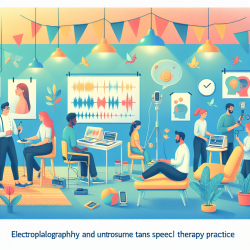As a speech-language pathologist, you are undoubtedly aware of the complexities involved in treating patients with tracheostomies, particularly those requiring invasive ventilation. A recent scoping review titled Long-Term Care for Tracheotomised Patients With or Without Invasive Ventilation. Lessons Learned from a Scoping Review of International Concepts offers invaluable insights into optimizing care for these patients. This blog will delve into the research findings and provide actionable steps to enhance your therapeutic practice.
Key Takeaways from the Research
The scoping review analyzed 25 programs across five countries, revealing several critical elements for effective long-term care of tracheotomised patients. Here are the primary takeaways:
- Individualized Care Models: Tailoring interventions to the specific needs of each patient, often using frameworks like the medical home or case management.
- Regional Adaptation: Programs are often region-specific, utilizing local resources and adapting to regional healthcare structures.
- Cross-Sectoral Approaches: Effective programs integrate services across multiple sectors, including inpatient, outpatient, home care, and even social and educational services.
- Multi-Professional Teams: These teams often include advanced nurse practitioners as care coordinators, supported by a range of specialists from various fields.
- Comprehensive Services: Programs that offer a combination of needs-based clinical services, care coordination, homecare support, and education tend to be more effective.
Implementing These Insights in Your Practice
Here’s how you can apply these findings to improve your practice and outcomes for your patients:
- Adopt a Multi-Professional Approach: Collaborate with other healthcare professionals, including nurses, social workers, and respiratory therapists, to provide holistic care.
- Utilize Care Coordination: Implement a care coordination framework to ensure continuity and integration of services, from hospital discharge to home care.
- Leverage Technology: Use telehealth and digital tools for remote monitoring and follow-up, especially for patients in remote or underserved areas.
- Focus on Education: Provide ongoing training and education for patients and their families to empower them in managing care at home.
- Customize Interventions: Tailor your therapeutic interventions to the specific needs and conditions of each patient, using data-driven assessments to guide your approach.
Encouraging Further Research
While the scoping review offers valuable insights, it also highlights the need for further research. Key areas for future investigation include:
- Evaluating the long-term outcomes of integrated care models.
- Assessing the effectiveness of telehealth interventions in long-term care.
- Investigating the impact of multi-professional team dynamics on patient outcomes.
- Exploring patient and caregiver experiences to enhance care delivery.
By staying abreast of ongoing research and integrating these insights into your practice, you can significantly improve the quality of care for tracheotomised patients.
To read the original research paper, please follow this link: Long-Term Care for Tracheotomised Patients With or Without Invasive Ventilation. Lessons Learned from a Scoping Review of International Concepts.










